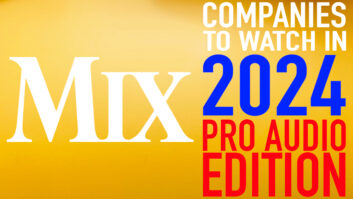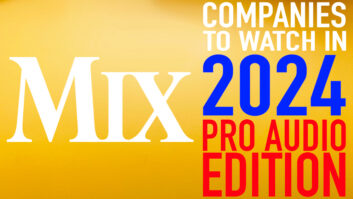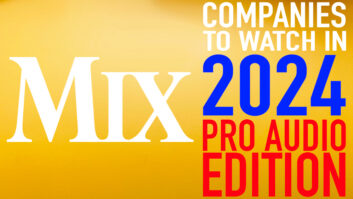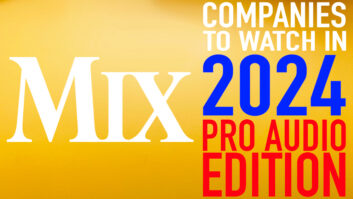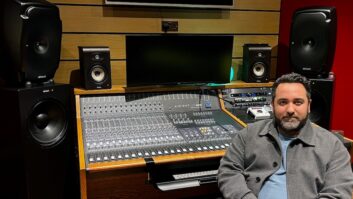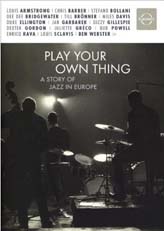
Play Your Own Thing: A Story of Jazz in Europe (EuroArts Entertainment)
We think of jazz as America’s greatest indigenous art form, which it is, but it’s fair to say that Europeans have had a big hand in its development and, yes, its very survival through the years. Beyond the fact that most early jazz instruments were European-made (or crafted by European immigrants in America), and some of the music’s early masters were European or immigrants—Django Reinhardt, Joe Venuti and Eddie Lang (nee Salvatore Massaro) are three that jump to mind—beginning in the 1930s, but particularly after World War II, Europe proved to be an extremely supportive environment for American jazz musicians. The racism that dogged African-American players in the U.S. was largely absent in Europe, there were plenty of venues to play across The Continent, and an enthusiastic—even fanatical—fan base. A number of great American players moved to Europe for both short and long stints in places like London, Paris, Copenhagen and Berlin, so it’s no surprise that hundreds of mostly young European musicians were influenced to start playing jazz themselves. They started out being mostly imitative of their American idols, but over time brought their own distinctive styles and unique cultural influences to jazz, a cross-pollination that continues to this day.
These two fine documentaries, which were released this past winter, offer a European perspective on jazz. Both are the work of German director/screenwriter Julian Benedikt, who clearly has a deep understanding of the music, and the filmmaking chops to tell his stories in interesting visual ways. The Blue Note documentary was originally released in 1997, but is only now getting its American DVD release; Jazz in Europe came out in 2006.
For my money, Play Your Own Thing: A Story of Jazz in Europe is the better of the two 90-minute films. Using a wide range of historical material, live performances, contemporary interviews, and more abstract and impressionistic footage, Benedikt weaves a fascinating tale. Although the Nazis scorned and even banned jazz, we see young Germans secretly listening to Glenn Miller on the radio during World War II. For Germans and others throughout Europe, jazz—particularly after the war—became a symbol of freedom and individual expression: It “accompanied the liberation of Europe,” the film says, and many GIs stationed in Europe after the war were musicians themselves and freely shared their skills.
There’s wonderful footage of Charlie Parker and Johnny Hodges in action—Parker, in particular, became revered throughout Europe, his music a soundtrack to post-war urban life. There are numerous poignant (subtitled) interviews with European jazzers who explain their attraction to jazz: For instance, guitarist Coco Schumann talks about how hearing Ella Fitzgerald’s “A-Tisket, A-Tasket” for the first time was like being struck by lightning (he later got to back the great singer). Juliette Greco talks about meeting Miles Davis in Paris—she walked into his hotel room and he was lying in a bathtub playing Bach on his horn; a great image. (They became lovers, she his muse for a period.) Ben Webster and Bud Powell found great acceptance in Europe, as did Dizzy Gillespie and Dexter Gordon. And many American greats played in bands in Europe dominated by local players—we’ve seen a number of them previously on the Jazz Icons DVD series reviewed here.
“The secret language of bebop” helped create Europe’s “first cool generation” and proved to be extremely influential on young musicians. And then, when the Free Jazz of Ornette Coleman, Don Cherry and others came into vogue, that really opened the floodgates and gave European players the license to follow their own hearts and whims musically. Still, trumpeter Till Bronner expresses the nearly universal sentiment of many Europeans: “Must I be black and American to be allowed to play jazz? Or is jazz by now a language, a whole vocabulary, that is accessible to everyone?” The answer is clearly the latter, and the documentary shows a slew of great European players in action, concluding with the highly influential ECM Records scene around producer Manfred Eicher in Oslo—ECM saxophonist Jan Garbarek is one of the film’s most articulate spokespersons, and also is shown performing a wonderful piece. All in all, a fascinating DVD. And I’m gonna go out and buy a CD by trumpeter Tomasz Stanko next chance I get!

Blue Note: A Story of Modern Jazz (EuroArts Entertainment)
Blue Note: A Story of Modern Jazz has a strong European angle, too. The founders of the legendary American jazz label—Alfred Lion and Francis (Frank) Wolff—were both German immigrants who moved to New York to escape the oppressive rising tide of fascism. They started Blue Note in 1939 with a release by pianists Albert Ammons and Pete Johnson, and quickly established their label as a place where musicians could truly and freely express themselves. In their early days, producer Bob Belden remarks, Lion and Wolff favored artists who were perhaps a bit past their prime, but still really good—a 1940 disc of “Summertime” by veteran Sydney Bechet became a bona fide hit for the label. Later, of course, Lion became known for signing up-and-coming greats, including Clifford Brown, Thelonious Monk, Art Blakey, Horace Silver, Jimmy Smith…the list is endless. Jazz producer Michael Cuscuna notes that, “There was no financial consideration in what [Lion] did. He recorded what he felt and what he loved. Some of it sold a lot, and a lot of it sold nothing, but we owe him a great debt for the music he documented”—more than a thousand albums before he sold the company in 1986.
The documentary jumps around a bit for my taste—it lacks a steady, coherent historical narrative, though the whole story is eventually told in chunks throughout the film. Various musicians and producers (and engineer Rudy Van Gelder) help tell the story, and there are also a few unexpected “outsiders” who offer their wise insights, including Carlos Santana (who notes that “Miles and Charlie Parker and Ellington are our Beethovens”), French director Bertrand Tavernier and basketball star (and jazz aficionado) Kareem Abdul-Jabbar. The performances are, predictably, wonderful: Besides vintage performance footage (again, mostly from Europe), there is also quite a bit from a 1985 celebration of Blue Note featuring Freddie Hubbard and others—good stuff. I would have liked to have seen more musicians ID’d on screen and perhaps a bit less of the post-Lion Blue Note, but there’s still plenty to love in this interesting take on American jazz history.
You can find me listening to Blue Trane (Blue Note’s lone Coltrane release…nice!) at [email protected].
